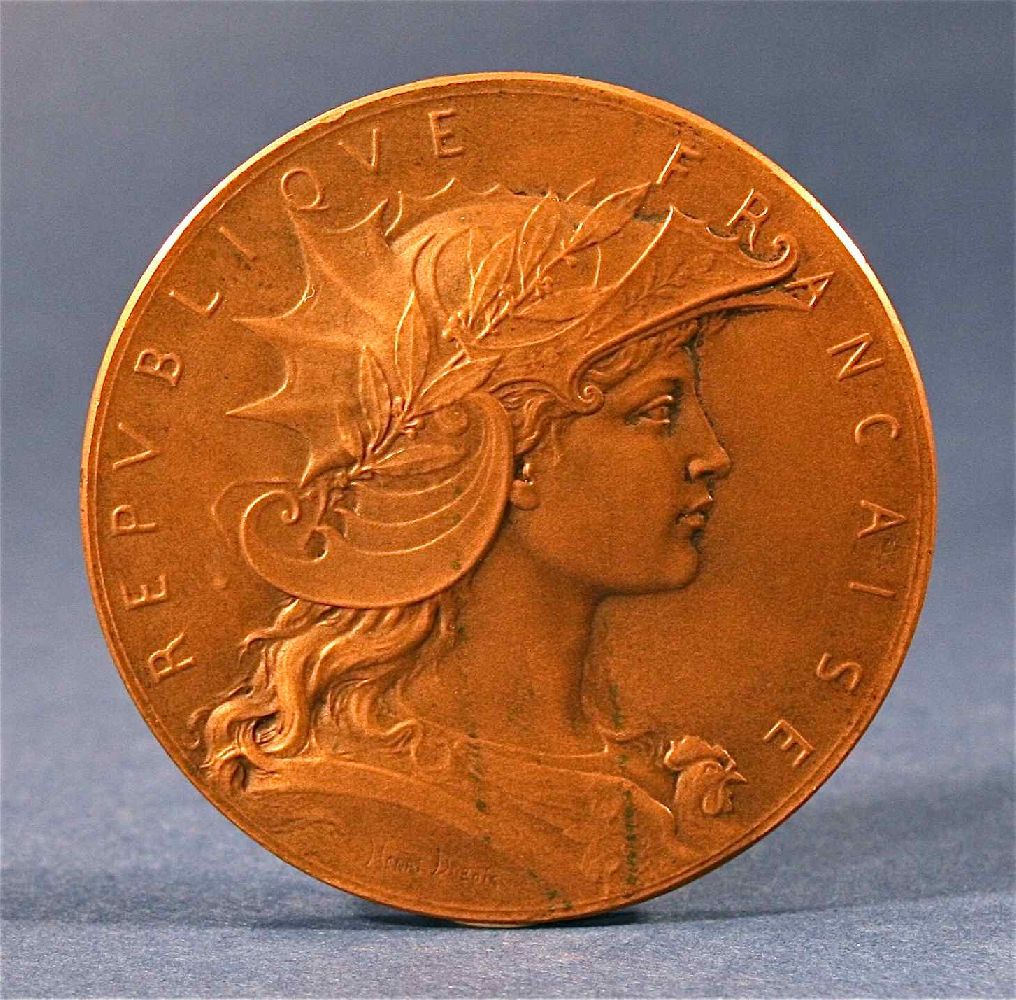

Title: Bronze Metal Repvbliqve Francaise By Artist Henri Dubois
Shipping: $19.00
Artist:
Period: 19th Century
History: N/A
Origin: Central Europe > France
Condition: Museum Quality
Item Date: 1890
Item ID: 5345
Here is a Nice Art Nouveau Bronze Medal armored bust of Marianne left wearing a winged helmet, by Henri Dubois. A Paris sculptor who produced medals in the late nineteenth and early twentieth centuries and engraved this official medallion. Signed Henri-Dubois. Comes with a Case, which is worn, A Nice Collectible! This is a Gorgeous bronze metal Repvbliqve Francaise - Marianne with Finned Helmet, Shooting Medal - Prix Offer Per Le Ministre De La Guerre By Artist Henri Dubois. A cased bronze medallion Art Nouveau. France - Ministry of War 1890 - Bronze Medal - French Marianne depicted on the obverse. BRONZE MEDAL, SHOOTING AWARD, FRANCE, NUDE BOY Obverse: République française. Reverse: Prix offert par le Ministre de la Guerre, Concours De Tir. “Marianne” 1896 Banquet Souvenir Medal. Ernest Henri du Bois (French, 1863-1931) Carlsberg Glyptotek, Copenhagen, Denmark, (French Neo Hellenistic School) ABOUT THE ARTIST Henri DUBOIS (1859-1930), French sculptor and medallist, pupil of Chapus, Falguière and of his father Alphée Dubois. He obtained the Second Grand Prix de Rome de gravure en médailles in 1878 (won that year by Louis Bottée). Chevalier de la Légion d'honneur in 1903.In the Magazine of Art in 1900, Mr E.F. Strange writes about H.Dubois (excerpt) : « The work of Dubois belongs to the more cultured and graceful school of the French medallists, and its effect is produced by more delicate and almost classical methods.”.
Link: http://en.wikipedia.org/wiki/Sculpture
Sculpture is the branch of the visual arts that operates in three dimensions. Traditionally, sculptural process have focused on carving and modelling, generally in stone, metal, and wood, but since modernism shifts in sculptural process have led to an almost complete freedom of materials and process. The Western tradition of sculpture began in Ancient Greece, and Greece is widely seen as a producing great masterpieces in the classical period. During the Middle Ages, Gothic sculpture represented the agonies and passions of the Christian faith. The revival of classical models in the Renaissance produced famous sculptures like Michelangelo's David. Modernist sculpture moved away from traditional processes and the emphasis on the depiction of the human body, with the making of constructed sculpture, and the presentation of found objects as finished art works.
Materials may be worked by removal such as carving; or they may be assembled such as by welding, hardened such as by firing, or molded or cast. Surface decoration such as paint may be applied. Sculpture has been described as one of the plastic arts because it can involve the use of materials that can be moulded or modulated. Found objects may be presented as sculptures.
Sculpture is an important form of public art. A collection of sculpture in a garden setting may be referred to as a sculpture garden.